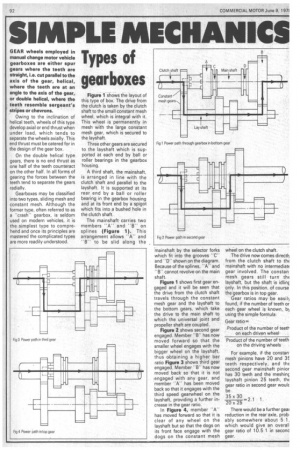SIMPLE 'MECHANICS
Page 94

If you've noticed an error in this article please click here to report it so we can fix it.
GEAR wheels employed in manual change motor vehicle gearboxes are either spur gears where the teeth are straight, i.e. cut parallel to the axis of the gear, helical, where the teeth are at an angle to the axis of the gear, or double helical, where the teeth resemble sergeant's stripes or chevrons.
Owing to the inclination of helical teeth, wheels of this type develop axial or end thrust when under load, which tends to separate the wheels axially. This end thrust must be catered for in the design of the gear box.
On the double helical type gears, there is no end thrust as one half of the teeth counteract on the other half. In all forms of gearing the forces between the teeth tend to separate the gears radially.
Gearboxes may be classified into two types, sliding mesh and constant mesh. Although the former type, often referred to as a "crash" gearbox, is seldom used on modern vehicles, it is the simplest type to comprehend and once its principles are mastered the complicated types are more readily understood.




















































































































































